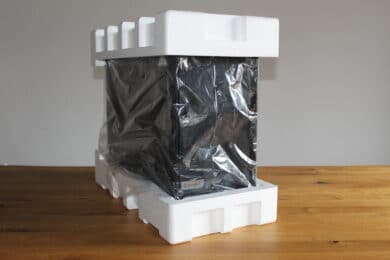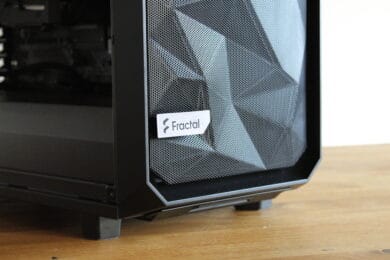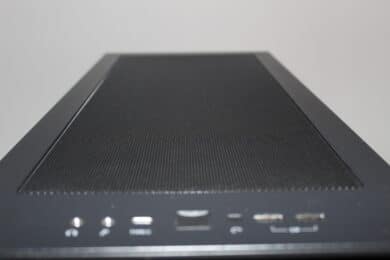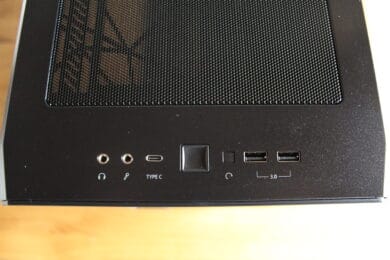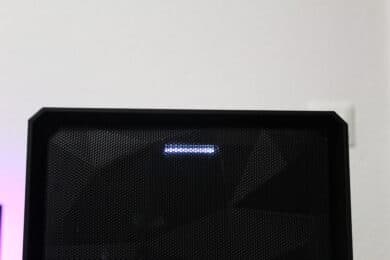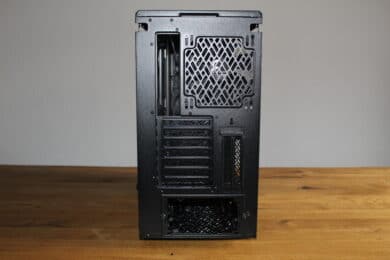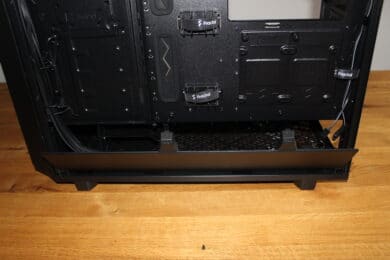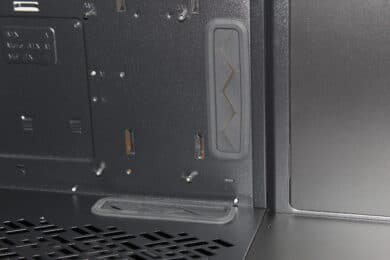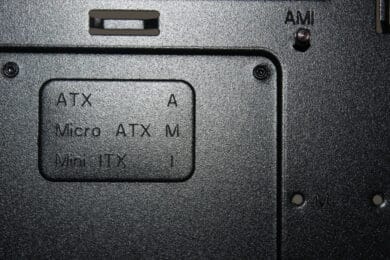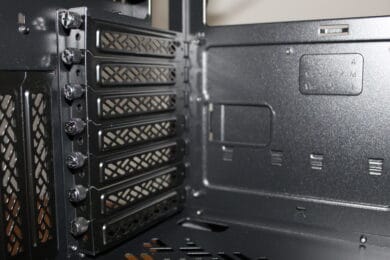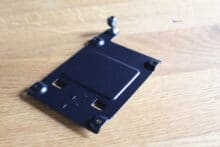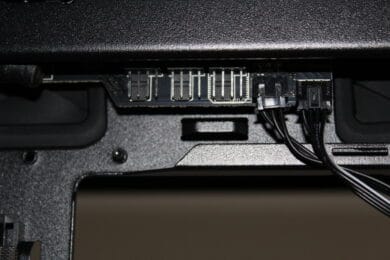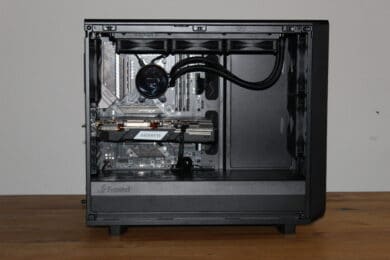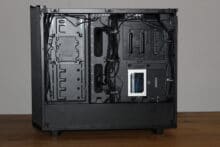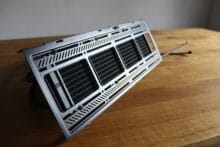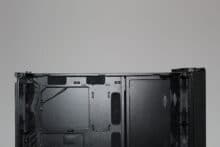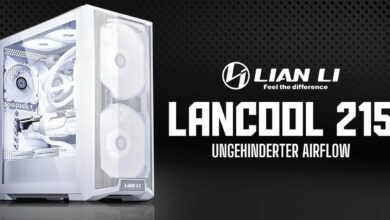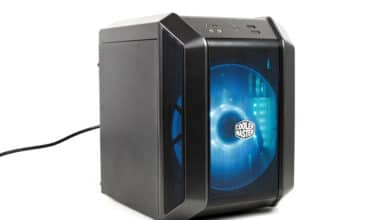
Fractal Design stands for quality in the housing market. The current and popular series “Define” and “Meshify” are always worth a recommendation – now the second generation of the Meshify is added. The Meshify series features a complete mesh front in 3D diamond look, so the open design guarantees a good airflow. Whether the new Meshify 2 can convince with the usual quality, you can find out here in the test.
Specifications
| Mainboard compatibility | E-ATX (max. 285 mm) / ATX / mATX / ITX |
| Dimensions (L x W x H) | 542 x 240 x 474 mm |
| Ventilation | front: 3x 120/140 mm (2x included) Top: 3x 120/140 mm Rear: 1x 120/140 mm (1x included) bottom: 2x 120/140 mm |
| Radiator compatibility | front: Up to 360/280 mm Top: Up to 360/420 mm (max. 360 if front radius is available) Rear: 120 mm floor: Up to 240/280 mm |
| Max. length GPU | 491 mm total 467 mm if front fan installed 315 mm in storage layout for cards over 150 mm wide (incl. connectors) |
| Max. length PSU | 250 mm (HDD cage at standard position) |
| Max. height CPU cooler | 185 mm |
| Drive positions | 2.5″/3.5″ Multibracket: 11 positions (storage layout), 6 brackets included 2.5″ brackets: 4 positions, 2 brackets included |
| Price | UVP 129,99 € (solid side panel), 139,99 € (tempered glass side panel) |
Scope of delivery
A brown box with all the necessary specifications and a picture of the case – this type of packaging has already become standard. Inside the box is the well secured case, several screws, a manual and more hard disk slides.
Outside impression
The Meshify 2 is reminiscent of a hybrid of the Define 7 and the Meshify C. Basically, of course, the front sticks out of the mesh – but many of the positive features of the Define 7 have been adopted.
The side parts are fixed with push-pins, so you can remove them simply by pulling on the handles provided for this purpose – but they still sit tight and you don’t run the risk of them simply falling out. The technique is convincing and very pleasant.
In addition to the mesh in the front, the top and the bottom are also equipped with ventilation openings including a dust filter. These are fine and can be easily removed for cleaning. On the lower side it can be easily slid out, the upper one can also be removed by sliding.
The top side includes the front I/O in addition to the ventilation opening. In addition to the power and reset button, there are two USB 3.0, USB type C and microphone and headphone connections. The buttons are not illuminated, but a power LED is hidden on the upper side of the front.
An eye-catcher is the Tempered Glass, darkly tinted in our test specimen. Through the glass on the left side you can view your hardware at any time – with or without RGB lighting. The dark tint provides a dimmed effect, especially a lot of lighting is more discreet.
Under the case there are of course feet besides the dust filter. These are made of hard plastic and rubberized on the bottom side. The whole system stands on safe feet and has enough distance to the floor, so that enough air can be sucked in from below if necessary.
The complete front mesh can be easily removed to reach the dust filter. This is magnetically attached and easy to clean. In general we like the completely tool-less assembly very much – in case of problems or for an upgrade you can get your hardware quickly and easily at any time.
Inside impression
The Meshify 2 offers a lot of space in the mainboard compartment. There is room for oversized mainboards in E-ATX format with a width of up to 285 mm. There are also different possible layouts – in the delivery state the area behind the mesh is free. Here you could alternatively rotate a part of the rear panel to get the “storage layout”, in which up to 9 additional SSD slots can be added. If you are more into custom water cooling, this is the ideal place for a pump and expansion tank combination, mounting holes are already available.
Fan positions are also abundant here. In addition to three 140 mm fans in the front and in the lid, another one can be installed in the rear and two in the power supply slot. Radiator compatibility is also excellent with up to one 420 mm radiator in the lid, one 360 mm radiator in the front (which can be used twice 360 mm at the same time, otherwise there is an overlap) and one 280 mm radiator in the base. If you want to mount a radiator in the front, you have to remove a part of the power supply slot. Here there are two single steps, depending on the radiator thickness.
There are openings at all required places to lead the cables into the rear area. These are mostly provided with rubber openings to round off the overall picture. Also a nice detail is that the positions of the spacers are labeled – so you know directly which spacers to use or reposition if you don’t use ATX.
Seven slot panels await us in the rear, and there are also two slots to install your own GPU vertically if necessary. Of course, a PCIe riser cable is needed for this, it is not included in the scope of delivery. Fractal Design itself recommends to do this only with water-cooled cards, otherwise the air supply is extremely limited.
As one is used to from current cases, there is a power supply slot in the lower part of the case. There are two alternative positions for mounting SSDs. Here the power supply has enough space to store many cables, for example in the storage layout. Furthermore, there are two pre-installed 3.5″ HDD slides. The lower part of the back is hidden by a panel, so you can hide the excess cables with a clear conscience. Basically there is a lot of space on the backside – even complex RGB cabling would fit in here without problems.
By default there are two SSD slides that are mounted in the back of the mainboard. Like the HDD slides, these are fixed with a knurled screw and are easily accessible. The feel of the individual parts is good – everything that can be removed feels high-quality and can be secured firmly and without any problems.
In addition, the upper area was used for a small fan controller. Here you can connect up to three more 4-pin PWM fans and a total of six 3-pin fans. The space is well used, but we would like to have more 4-pin connectors. The PWM-controlled fans are increasingly displacing the DC fans, so here is something about. The three 140 mm fans are 3-pin, so you can connect them directly here.
System installation and performance test
Due to the above-average space inside the case, there are no problems here. It is fun to build the system into the case, because there are simply feedthroughs needed at all places and there is more than enough space. Both in the mainboard area and in the rear chamber there is extremely much space.
Therefore a part of the cover is removable, this can be mounted directly on a radiator and pushed in again. This gives you a lot of space, because it is completely open from the top – there is no need to fiddle with the CPU power plug or the CPU fan header.
Cable management has never been so easy thanks to the pre-mounted Velcro fasteners and clearly defined paths – a clear advantage. If a case claims to have “cable management”, we would always want Fractal Design’s approach. You don’t even have to do anything yourself – just put cables into the loops and the result is already impressive. The “unsightly” rest is then removed from the field of view with the bezel.
We have installed the following components as a test system:
- Ryzen 5 3600
- MSI B550 Tomahawk
- NZXT Octopus X73
- Crucial Ballistix Sport LT 3000 MHz*
- GIGABYTE RX 5600 XT GAMING OC
- BeQuiet! straight power 11 550W*
Now, of course, a performance test should not be missing – we tested it in direct comparison to the very similar Fractal Design Define 7 to see how much the mesh front actually does. In order to heat up the inside of the case, we ran Prime95 and Furmark for 30 minutes in both systems – this way the GPU and CPU give off a lot of waste heat which has to be removed from the case.
| temp. CPU (5V fan) |
temp. CPU (12V fan) |
temp. GPU (5V fan) |
temp. GPU (12V fan) |
|
| Meshify 2 | 66.4 °C | 64.4 °C | 56°C | 50°C |
| Define 7 | 77.6 °C | 75.2 °C | 59°C | 56°C |
As you can see, the differences are extreme. Of course two extreme cases have been put against each other, but the Meshify 2, like its predecessors, convinces with a very strong airflow. But if you suspect an extremely loud case here, you are not completely right. Due to the very good airflow the fans can turn low – especially the pre-installed 140 mm fans. As long as you don’t drive an extreme load, it’s not noticeably louder than the insulated Define 7. The included fans don’t rattle, move a lot of air and look robust. Top!
Conclusion
Lots of space, tool-free assembly of the case, three good fans – what more can you expect from a case? Fractal Design convinces again with its Meshify series. You combine the advantages of the Meshify with those of the Define 7 and get a thoroughly convincing product.
Compared to its direct predecessor, the Meshify S2, it was possible to improve a few points. The maximum length of the GPU was increased, the removable part of the PSU-shroud was split in two. In addition, the side parts can be removed without tools and the feet have been adapted to the Define 7. Also the “storage layout” has been added, the front filter is removable and the front connectors are located on the body, away from the front mesh.
In summary, Fractal Design manages to make the Meshify 2 a round product. Compared to the S2, the RRP has also dropped – to €129.99 (solid panel) and €139.99 (tempered glass side panel). Of course it is still in the high-end case market with the price, but it also brings a lot of features that are missing in cheap cases. We are convinced that the Meshify 2 deserves the Platinum Award.
Fractal Design Meshify 2
Workmanship
Structure
Features
Dampening
Cooling
Value for money
95/100
Sophisticated and high quality mesh case - convincing in every aspect!




